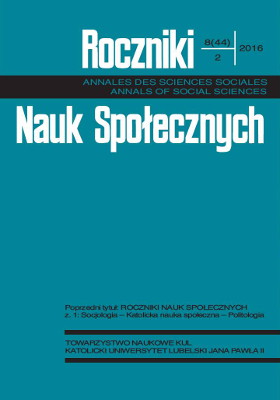Psychospołeczne funkcjonowanie dorosłych dzieci migrantów zarobkowych na podstawie metody psychorysunku
Psychosocial Functioning of an Adult Child in a Migrant Family on the Basis of Psycho-Drawing Method. Comparative Research
Author(s): Julia GorbaniukSubject(s): Social Sciences, Sociology, Migration Studies
Published by: Towarzystwo Naukowe KUL & Katolicki Uniwersytet Lubelski Jana Pawła II
Keywords: adult child in a migrant family; projection method; psychosocial functioning of a child
Summary/Abstract: This article presents the findings from a comparative study on two groups of adults. The first comprised 48 persons, who had been separated from one or both of their parents in their childhood as a result of economic migration; and the second included 48 persons who had not experienced any long-term separation from their parents during their childhood. The study and control groups were selected on a complementary basis to account for such variables as age, gender, place of residence and education. In the study group, the length of separation from one or both parents (adult children of migrants) was 3 to 7 years.The study used a structured interview developed by the Author for the purposes of this study, and a projective test, namely a psycho-drawing described as “My family of origin”, drawn from the present perspective. Subjects were asked to draw their families – parents and adult siblings as a family group, while also depicting current relations between the individual family members. On the basis of the literature on the subject, the Author developed a questionnaire to assess the drawing. The questionnaire, entitled “My family”, accounted for 6 categories of psycho-social functioning of the individual, including idealization or devaluation (of a child, father, or mother), compared to other persons; the quality of child’s emotionality expressed by their portrayal of themselves in the drawing; child’s anxiety level expressed through the projection in the drawing; aggression accumulated in the figure portrayed in the drawing (child, father, mother); and readiness to communicate with the parent who lives abroad/at home. The qualitative and quantitative assessment of the collected data made it possible do identify long-term consequences of such separation.
Journal: Roczniki Nauk Społecznych
- Issue Year: 44/2016
- Issue No: 2
- Page Range: 105-122
- Page Count: 18
- Language: Polish

